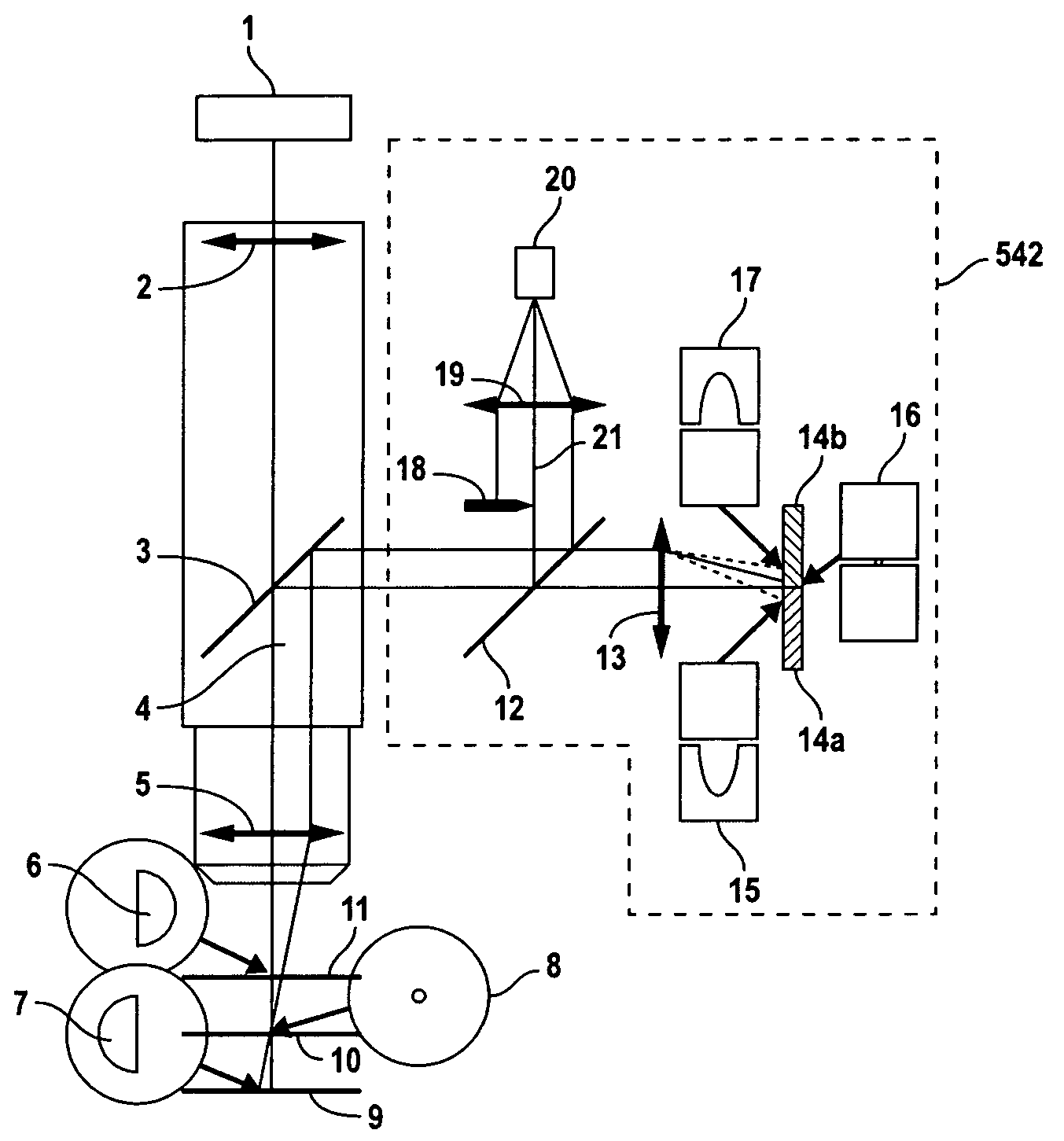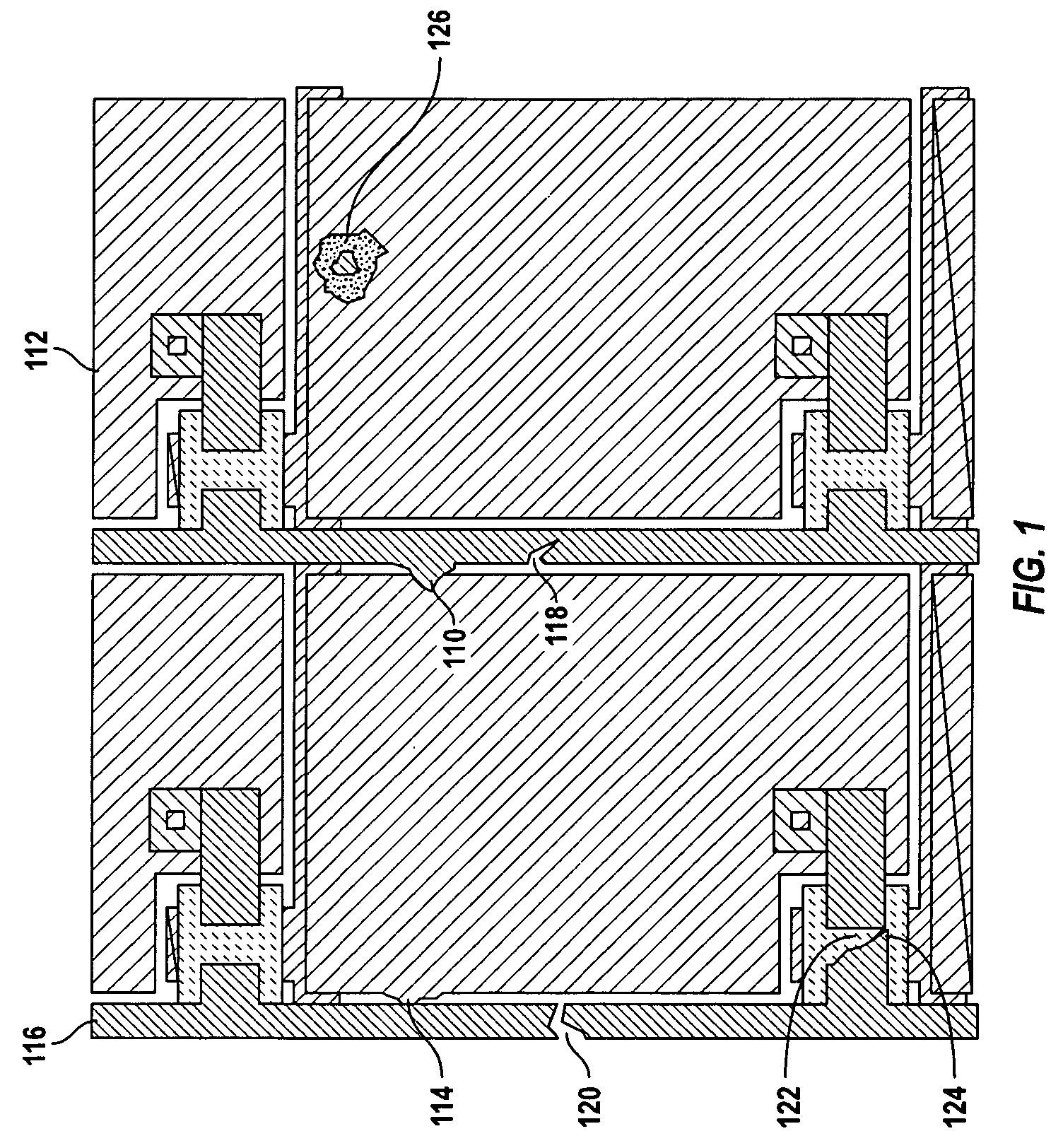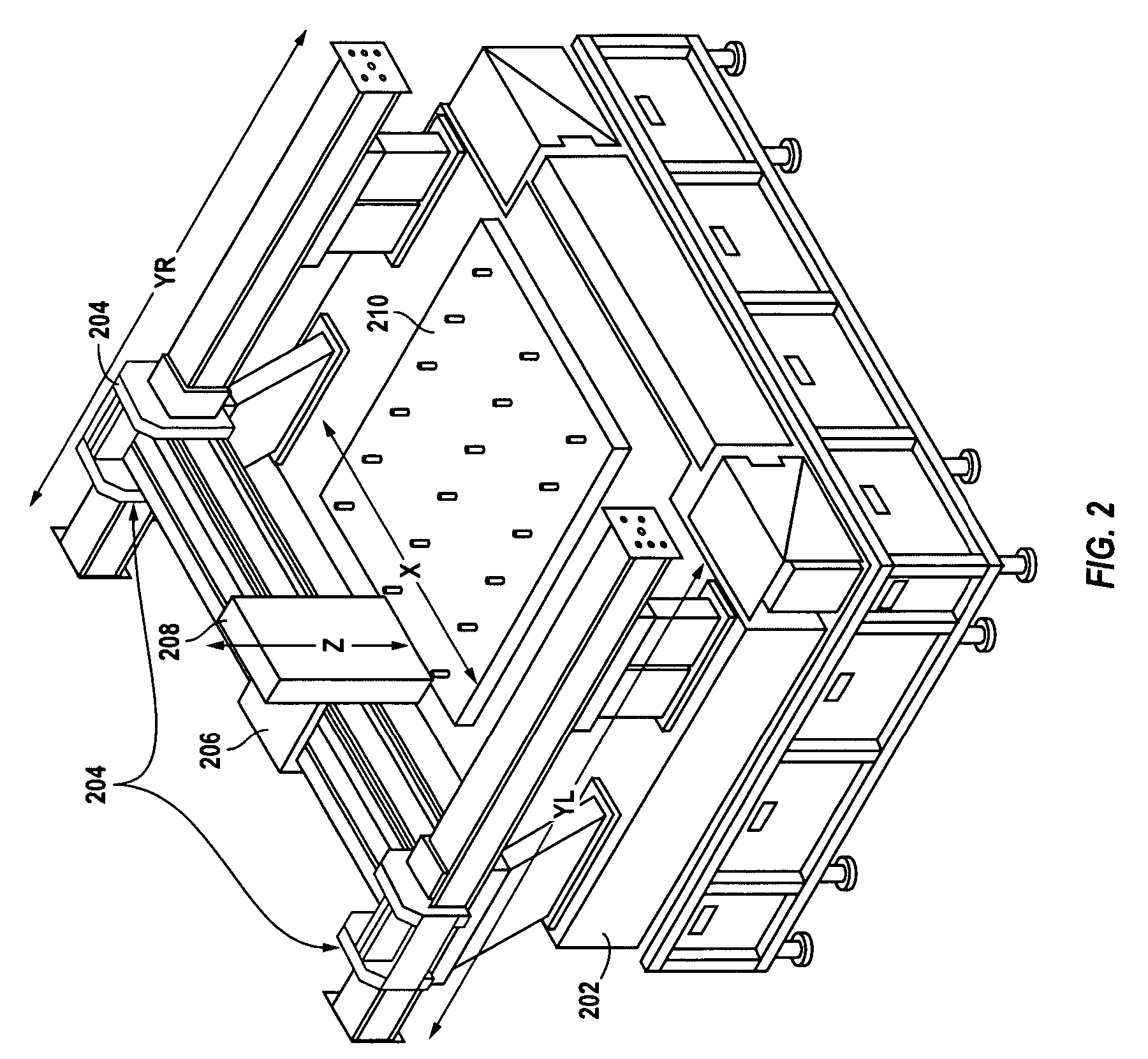Tracking auto focus system
a technology of auto-focusing and tracking, which is applied in the direction of instruments, optical elements, mountings, etc., can solve the problems of over- or under-etching, affecting the electrical and/or optical performance of the final lcd product, and unavoidable defects, etc., and achieves the effect of eliminating the auto-focusing tim
- Summary
- Abstract
- Description
- Claims
- Application Information
AI Technical Summary
Benefits of technology
Problems solved by technology
Method used
Image
Examples
Embodiment Construction
[0032]In accordance with one embodiment of the present invention, a substantially fixed distance is maintained between a control head and a target surface undergoing inspection and / or repair. To achieve this, a non-contacting sensor (alternatively referred to herein as gap sensor) continuously measures the distance between the control had and the target surface. A servo control system receives the measured distance, and in response, varies the position of the control head relative to the target surface so as to maintain the substantially fixed distance therebetween.
[0033]In one embodiment, the control head includes a microscope and / or a repair unit, and the target surface is a TFT array formed on a plate. In such embodiments, the microscope is continuously maintained in focus while being pointed at a TFT array, thereby eliminating the need to take time to re-focus at each site of interest across the TFT array plate. For such exemplary embodiments, it is desirable to maintain a subst...
PUM
| Property | Measurement | Unit |
|---|---|---|
| size | aaaaa | aaaaa |
| size | aaaaa | aaaaa |
| Depth of focus | aaaaa | aaaaa |
Abstract
Description
Claims
Application Information
 Login to View More
Login to View More - R&D
- Intellectual Property
- Life Sciences
- Materials
- Tech Scout
- Unparalleled Data Quality
- Higher Quality Content
- 60% Fewer Hallucinations
Browse by: Latest US Patents, China's latest patents, Technical Efficacy Thesaurus, Application Domain, Technology Topic, Popular Technical Reports.
© 2025 PatSnap. All rights reserved.Legal|Privacy policy|Modern Slavery Act Transparency Statement|Sitemap|About US| Contact US: help@patsnap.com



